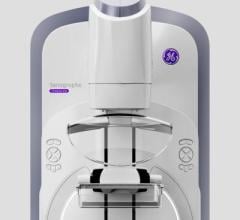Increased Awareness Teamed With Advanced Technology Saves Lives

According to BreastCancer.org, an estimated 266,120 new cases of invasive breast cancer are expected to be diagnosed in the U.S. in 2018, along with 63,960 new cases of in situ breast cancer. About 1 in 8 U.S. women — around 12.4 percent — will develop invasive breast cancer over the course of her lifetime. About 40,920 women in the U.S. are expected to die from breast cancer this year, although death rates have been decreasing since 1989, with women under 50 experiencing larger decreases. Undoubtedly the stressed importance of early detection, increased awareness of breast density, and both treatment and technology advancements have played a large role in this slow but steady decline.
Breast imaging technologies have evolved fairly rapidly over the past two decades to help physicians detect breast cancers at an earlier stage. Clinical studies have proven the effectiveness of newer technologies such as automated breast ultrasound (ABUS), digital breast tomosynthesis (DBT) and breast magnetic resonance imaging (MRI) in finding more cancers that traditional mammograms might miss, as well as interval cancers that develop between screenings.
While the benefits of these and other supplemental screening methods have been demonstrated, a multimodality approach is not necessarily the best one for every woman. “It’s not a one-size-fits-all, it never has been in a lot of ways,” said Karen Hou, M.D., diagnostic radiologist at Northwestern Medicine Central DuPage Hospital (CDH) in Winfield, Ill., in the itnTV video “Breast Imaging and Risk Assessment at Northwestern Medicine Central DuPage.” To ensure that every woman gets the appropriate level of care she deserves, Hou and her colleagues at the CDH Breast Health Center opened the CDH High-Risk Breast Clinic in 2017.
In the video, Hou discusses ways to best implement the various breast screening technologies to serve your patient base. “You have to look at how you want it to fit your workflow, and make a decision on what you are going to use as a screening tool and what you are going to use to make a diagnostic decision. You want to be applying the technology in the most appropriate way so that patients will benefit the most,” she stated. “What we’ve done is try to use some kind of logic of what is accessible for people and what we could do to best serve them. It’s not a one-size-fits-all, it never has been in a lot of ways. It’s a lot of personalized customization of what is best for each individual’s care.”
Northwestern Medicine’s high-risk program entails its team trying to identify the high-risk individuals based on family and personal risk factors. “There are individuals who should not just have a mammogram once a year or every other year, and there are certain individuals who really should have more intense screening, and most importantly education and counseling,” Hou explained. “We have a high-risk clinic where people can get assessed, and they can sit down with somebody to really just discuss their personal level of risk and what they should be doing — it’s lifestyle, it’s having an understanding of what the reality is. We have identified early cancers in individuals who have been screened and would have otherwise been unsuspected. Here, we wanted to make it an established part of our program that is easily accessible.”
You can watch the video featuring Hou at https://bit.ly/2xCd2eT. To read more about advanced breast imaging technologies in this issue, see “The Evolution of Digital Breast Tomosynthesis” on page 28, and “Practicing Patient-Centered Mammography” on page 30.
Augmented Content
We continue our enhanced coverage of the industry through Blippar content. It’s an innovative way for you to view expanded content in several of our features in each issue. This issue, our augmented print campaign begins on page 17, where you can watch the VIDEO “Examples of Artificial Intelligence in Medical Imaging Diagnostics.” For additional breast imaging information, watch the VIDEO roundtable discussion, “Stereotactic Breast Biopsy Procedures: A Roundtable Discussion With the Cleveland Clinic.” And for more information on women’s health issues and breast density, watch the VIDEOS: “Breast Imaging and Risk Assessment at Northwestern Medicine Central DuPage,” “The Impact of Breast Density Technology and Legislation” and “Developments in Breast Density Legislation and Screening Guidelines.”



 July 09, 2025
July 09, 2025 








